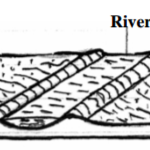KNEC KCSE Geography Paper 2 – 2014 Homa-Bay Mock
2014 Homa-Bay Mock
Geography Paper 2
SECTION A (25 Marks)
Answer all the questions
(a) Define the term game sanctuary (2mks)
(b) List any three significance of wildlife in Kenya (3mks)
5 marks
(a)Name two middle East countries which produce large quantities of petroleum (2mks)
(b) State three problems facing petroleum exploitation in middle East countries (3mks)
5 marks
(a) What is energy crisis? (2mks)
(b) State three benefits of rural electrification in Kenya (3mks)
5 marks
(a) Differentiate between forests and forestry (2mks)
(b) Give any three characteristics of softwood forests in Canada (3mks)
5 marks
Study the table below of coffee production in Kenya and answer question (a) and (b).
Production in‘000 tonnes of coffee in Kenya
| Year | 1999 | 200 | 1001 | 2002 | 2003 |
| Co-operative | 39.4 | 62.2 | 25.0 | 28.8 | 34.0 |
| Estates | 28.7 | 38.5 | 26.9 | 23.1 | 21.4 |
| Totals | 68.1 | 100.7 | 51.9 | 51.9 | 55.4 |
Source: Economic survey of Kenya 2004
(a) State three physical factors favouring coffee growing in Kenya (3mks)
(b) List any two role of coffee in the economies of Kenya and Brazil (2mks)
5 marks
SECTION B (75 Marks)
Answer question 6 and any other two questions from this section.
The photograph below shows an activity in Kenya. Use it to answer question (a) and (b).
(a)(i) Identify the type of photograph shown above (1mk)
(ii) State any two evidence in the photograph supporting a(i) above (2mks)
(iii)Draw a rectangle measuring 15cm by 10cm to represent the area covered by the photograph.
On it sketch and label four main features shown on the photograph (6mks)
(b) (i) Identify two features from the photograph that shows the area is dry (2mks)
(ii) Name two counties in Kenya where the photograph might have been taken (2mks)
(c)(i) Explain four problems facing pastrolism in Kenya (8mks)
(d) You intent to carry out a field study in the area shown by the photograph
(i) State two problems you are likely to encounter (2mks)
(ii) List any two follow-up activities you would carry out after the field study (2mks)
25 marks
(a) Define the following terms
(i) Tariff (1mk)
(ii)Quota (1mk)
(iii) Balance of payment (1mk)
(iv) Incentives (1mk)
(b) Explain four factors that hinders trade between Kenya and her neighbours (8mks)
(c) State any five problems developing countries face in International trade (8mks)
(d) Explain four measures Kenya has taken to reduce her unfavourable balance of trade (8mks)
25 marks
The map below shows the major fishing grounds in the world. Use it to answer the question (a)
(a)(i) Name the fishing grounds marked P,Q and R (3mks)
(ii) Explain four conditions that favour fishing in country marked S (8mks)
(b)(i) Differentiate the term Polagre and Dermorsal fish (2mks)
(ii) Describe long-lining as a method of commercial fishing (4mks)
(c)(i) State two methods used to preserve fish (2mks)
(ii) Explain three problems facing Marine fishing in East Africa (6mks)
25 marks
(a) Define the following
(i) Environmental management (2mks)
(ii) Environmental Conservation (2mks)
(b) Give five reasons why it is necessary to manage and conserve the environment (5mks)
(c) A part from irrigation explain five measures taken to control floods in Kenya (10mks)
(d) Suppose some student carried a field study
(i) List two methods you would use to collect data (2mks)
(ii) Why is it important to prepare a work schedule (4mks)
25 marks
(a) Differentiate between land rehabilitation and reclamation (2mks)
(b) (i) Besides irrigation state five methods used to reclaim land in Kenya (5mks)
(ii) Explain four benefits which Kenya gets from irrigation farming (8mks)
(c) (i) Define the term Polder (2mks)
(ii) Explain four benefits of land reclamation in Netherlands (8mks)
25 marks








